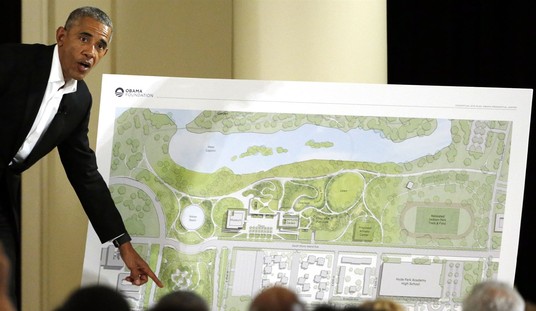Jazz and Islam, Part 9
Jazz was more popular than ever in the early ’60s. Then the Beatles exploded onto the American pop music scene, and that was the end of that. Jazz artists who had begun the decade engaging in innovative and enthusiastically received explorations of harmony and rhythm finished it by offering up tired, pale instrumental covers of psychedelic Top 40 hits. Ever since then, many of jazz’s fiercest partisans have spent an inordinate amount of time insisting that jazz is not dead — which, like the claim that “Islam is a religion of peace,” wouldn’t have to be endlessly repeated if it were obviously true.
If jazz is dead, two suspects who should be brought in for some intense questioning are two of the unlikeliest people ever to be thought of as the ones to have administered the coup de grace to America’s foremost native art form: Miles Davis and John Coltrane.
Now don’t get me wrong: I am one of the most ardent fans either one of them could possibly have ever had. On my shelves are easily two hundred discs featuring one or (better yet) both of them. Their historical role as towering musical pioneers and composers, improvisers, and virtuosos of the first order is unshakeable. Yet in their own ways, where the vibrant and popular jazz of the 1960s is concerned, they became death, the destroyer of worlds.
[jwplayer config=”pjm_lifestyle” mediaid=”38290″]
John Coltrane took the road less traveled. He became enamored of Ornette Coleman, the great innovator of “free jazz” — and with good reason. Coltrane liberated his sound from the dense chordally based improvisations he pursued with characteristic passion in the late ’50s and early ’60s — first adopting Davis’s modal approach, and then emulating Coleman in exploring improvisations free from harmonic structures altogether.
But unlike Coleman, whose music is airy and accessible, Coltrane gravitated toward the screaming intensity of saxophonists like Albert Ayler and John Gilmore, as well as two younger players who would become his protégés: Pharoah Sanders and Archie Shepp. The opening cut of Coltrane’s 1965 Meditations, “The Father and the Son and the Holy Ghost,” featuring Sanders, is so furiously intense that the English poet and jazz critic Philip Larkin dismissed it as “the most astounding piece of ugliness I have ever heard.”
But Larkin was just stodgy. I love “The Father and the Son and the Holy Ghost” and Meditations as a whole. It has an inner logic and coherence; it justifies and contextualizes its turbulence. But as Coltrane pursued this musical direction, it sometimes became hard to distinguish exploration from parody — take Om, for example, or the part on the often but not wholly superb Live in Seattle disc when the saxophone master starts, well, groaning. “If I had been one of the musicians on the stage,” a friend once remarked to me, “I would have wanted to sink through the stage in embarrassment.”
[jwplayer config=”pjm_lifestyle” mediaid=”38291″]
The New Thing, led by Coltrane, gave rise to a generation of younger jazz musicians who eschewed conventional harmony and song forms; a few of the real standouts are Anthony Braxton, Steve Lacy, Evan Parker, Joe McPhee, and Charles Gayle. Sometimes — even often — they made great, if challenging, music that remains among my personal favorites. They also never attracted anything like the audiences Coltrane commanded, playing instead to a small group of in-the-know devotees. As The Simpsons put it, “Fifteen jazz listeners can’t be wrong.” Ouch.
[jwplayer config=”pjm_lifestyle” mediaid=”38292″]
Miles Davis was determined not to let that happen. He loved and respected Coltrane but disapproved of his foray into free jazz, and had open contempt for his former partner’s avant garde colleagues and protégés. He saw how jazz was rapidly losing its audience to rock and roll, and in the late ’60s started to incorporate rock rhythms and instruments into his music.
Sometimes this worked brilliantly, as on the searching and introspective “Shhh/Peaceful” from 1969’s In A Silent Way, featuring organ, electric guitar, and electric piano. And as he continued on this path, Davis’s music often began to resemble the free-jazz freakouts he so disparaged from Coltrane and his followers — only with a rock backbeat and electric instruments. This, too, often worked wonderfully: “Zimbabwe” from the 1975 concert album Pangaea is as furiously intense as anything Coltrane ever recorded, and maintains interest throughout a series of astonishing shifts of color and mood.
[jwplayer config=”pjm_lifestyle” mediaid=”38293″]
Eventually, however, even Davis himself seems to have recognized that he was going down a dead end: rock and roll fans had little patience for extended virtuoso displays, much less for instrumental music in the first place, and hardcore jazz fans thought he had sold out. After a coke- and booze-fueled hiatus lasting several years, Davis returned to the music scene, only to record limp smooth jazz workouts of pop tunes like Cyndi Lauper’s “Time After Time.”
[jwplayer config=”pjm_lifestyle” mediaid=”38294″]
Indeed, it was Davis’s foray into rock and roll, or rock/jazz fusion, that foisted onto the world the monstrosity of smooth jazz, the muzak version of jazz that most people mistake for the real thing these days. The sort of music that livens up a trip down the bread aisle in an upscale supermarket, smooth jazz features glossy backing tracks that sound as if they were recorded by machine — if any human is playing on them, he is doing his best not to breathe. There is no improvisation (the hallmark of jazz) to speak of, and nothing whatsoever interesting about the arrangements or the approaches to the songs.
It is Miles Davis who brought us the likes of Kenny G, David Sanborn, David Benoit, and other handsomely remunerated purveyors of musical pap; it is John Coltrane to whom we owe self-important dweebs wearing dirty turtlenecks and black horn-rims, grating the ears on saxophones and trumpets while one is trying to get a beer in a college town bar — Miles Davis aptly termed them “no-playing m—–f—–s.” Jazz was so much healthier and more interesting when these two disparate strands of the music were still germinating within a larger unity, when Coltrane was the star member of Davis’s quintet, and the two titans had not yet torn it all apart. (And don’t get me started on Wynton Marsalis. If he’s jazz, Lindsay Lohan is Elizabeth Taylor.)
And so now jazz is not dead, and Islam is a religion of peace. For the former, we have Miles Davis and John Coltrane to thank.










Join the conversation as a VIP Member